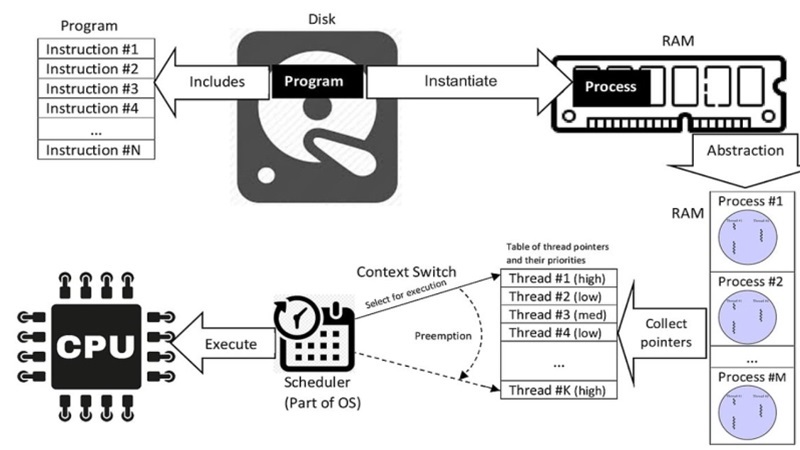Understanding Threads in IT: Insights from Thread Programming Expert, Joseph B.

In this engaging interview, Joseph, a knowledgeable expert in thread programming, delves into the concept of threads - discussing their function, mechanisms, and pros and cons.
ITStarter: Hello Joseph, we are thrilled to have you here with us. Can you please introduce yourself for our readers?
Joseph B.: Good day, everyone. I am Joseph, an experienced thread programming expert with a decade-long career. My expertise ranges from web and desktop to mobile applications and I’ve worked on a variety of projects.

ITStarter: Our readers may be curious, Joseph, could you define threads in IT?
Joseph B.: Threads are fundamental units of execution that operate within the same memory and resource pool as other threads within a process. They share similarities with processes, however, threading has its distinct advantages and challenges.
ITStarter: Could you explain the functioning of threads to us?
Joseph B.: Threads play a crucial role in a program’s execution. When a program is launched, the operating system creates a process for it, allowing it to run independently with its own memory space and resources.
Essentially, a thread is an execution unit within a process that shares the same memory space and resources with its parent. With this design, multiple threads can work together to complete tasks more efficiently.
ITStarter: That’s very interesting. Can you tell us about the benefits of using threads?
Joseph B.: The use of threads has many advantages over traditional processes.
- For example, they can help improve application performance by enabling tasks to be executed in parallel. This is particularly useful for applications like web browsers that need to handle multiple tasks simultaneously.
Using threads can maximize the efficiency of a web browsing application by delegating tasks to different threads.
- For instance, one thread could be dedicated to handling HTTP requests, another to running animations, and a separate one for background tasks like file downloads.
This enables seamless parallelization of tasks that can run independently.
- Similarly, in a video game, threads can be employed to concurrently handle animations, input/output operations, and scoring updates.
The use of threads simplifies programming by allowing multiple tasks to be executed simultaneously, making the process more efficient.

Joseph B.: Exemple - Imagine an application that has the ability to complete multiple tasks simultaneously without the hassle of coordinating or scheduling. This can be achieved through the use of threads.
ITStarter: What drawbacks come with implementing threads?
Joseph B.: While threads offer many benefits, they can also introduce some complexities, particularly in the realm of programming compared to more traditional processes.
In order to optimize their programs, developers must be knowledgeable about thread synchronization to prevent unwanted contention. Thread resources, including memory space and CPU time, must be carefully considered during programming.
Unlimited thread usage can decrease program performance.

ITStarter: Can you offer any advice to programmers interested in learning how to effectively use threads?
Joseph B.: Absolutely. Here are some tips for those looking to learn thread usage:
- **Start by comprehending the fundamental concepts surrounding threads, such as their functionality and benefits/drawbacks. **
**2. Hone your thread programming skills by starting with simple projects. **
**3. Once you have a strong grasp of the basics, you can confidently incorporate threads into more intricate projects. **
ITStarter: Thank you for your valuable insights, Joseph.
